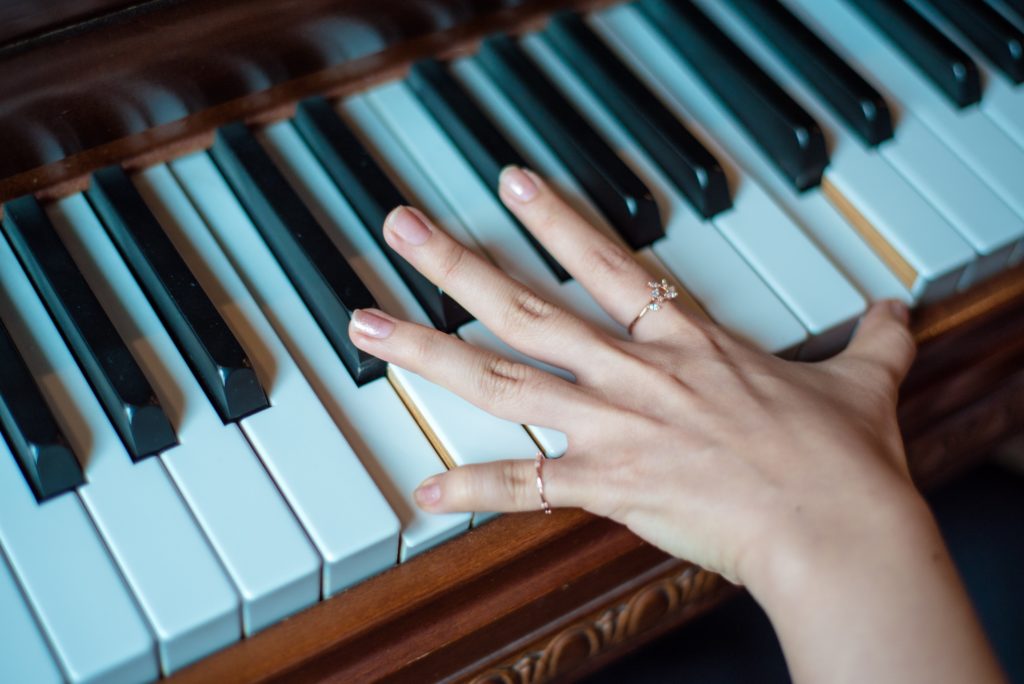
If you can’t read notes, you can learn this alternative to make it up on your playing. Learning to play a song by ear is a powerful skill that people can be trained. Regarless of what instrument you use, as long as you can learn ti identify the notes, you can play it through your instrument of choice. In drums or percussions, there is no note but as long as you can identify each drum or cymbal sounds, you can still learn it and replicate it to your playing.
Let us try to identify two things that people are able to do in terms of hearing – perfect pitch and relative pitch.
Perfect pitch
The ability to recognize the pitch of a musical note without any reference, such as a previously heard note or a tuning instrument, is known as perfect pitch, sometimes known as absolute pitch. A rare ability, perfect pitch is said to occur in less than one in 10,000 people. It allows a person to identify the pitch of any note they hear, including C, D, E, F, G, A, and B. These people are like human tuners because they can quickly identify the notes even without musical concept. Even the whistling of a kettle or a sound of the bus’ horn can be identified by perfect pitch people and knows the note of it instantly.
If you want to learn music with a perfect pitch, you already have a jumpstart and an advantage. However, perfect pitch is not necessary for success in music, yet it can be helpful for artists. Many well-known musicians do not have perfect pitch. I do not have this ability but I have the ability that I have learned which is the Relative Pitch.
Relative pitch
Some musicians can learn the ability via practice and training and this is called a Relative Pitch. A musical note’s relative pitch can be determined by comparing it to another reference pitch, such as a note that has already been heard or a well-known pitch, such as the tonic of a key. Relative pitch, as opposed to perfect pitch, is a talent that musicians use more frequently and that can be learned via practice. A musician can utilize relative pitch to detect chords, play by ear, write down music, and improvise by knowing the distance between two notes, such as a major third or a perfect fifth.
Many musicians value relative pitch as a key talent, especially those who perform in ensembles or without written music. Relative pitch is also an essential part of ear training. In this lesson, we are focusing on the relative pitch side to learn songs by ear. It takes practice to fully utilize this ability. We will focus on learning a song by ear with the relative pitch skill.
How to learn song by ear
Listen Intently
Pay close attention while you listen and try to identify the harmony, rhythm, and melody as you go along. First, a good recording of the song you want to is the one you must listen to. To accurately hear the various musical aspects, you must have a version that is crystal clear and professionally produced. There’s Spotify, Apple Music and even Youtube Music for most of the songs. It is a good practice to familiarize the song up the the point that you know it almost well.
Focus on one instrument or section at a time. Try to follow the song’s main melody or vocal line by identifying it at the outset. Move on to additional elements, such as the bassline, chords, or certain musical passages, once you have a firm grip of the melody. Start by identifying the main melody or vocal line and try to follow it throughout the song. Most of the melodic part or vocal line of the songs fall under the Major Scale. I also suggest to learn a simple song that you like and start from there.
Once you have a good grasp of the melody, move on to other parts of the sound. It depends on your part, if you play bass, focus on the bassline. If you’re a flutist, saxist or the like, focus only on the melody of your instrument. Guitarist and Pianist/Keyboadist like me, focuses on their respective parts, if there’s a riff/melody or solo, take extra attention to it.
Hum/Sing the Melody
To better comprehend the melody and its structure, hum or sing along with it then try different notes. Use your ear to select the right notes as you try to perform the song on the piano for example. If your hum matches the note, that is the note. You can try to identifty one note. As you go along, the melody that you can identify can be a phrase of the music already.
Chords
For instruments that require chords to play, Try to recognize the song’s chords by ear as you listen for them. Play around with different chords to see which ones work best with the tune. Just like the melody, there is a unison when you hit the right chord that you are learning by ear. It feels like a shirt that has a great fit. If it fits, it sits as they say. If you confirm most of the chords, base on their chord family or relative chords, you will have a clue what key the song will be.
Key
You can determine the key of the song with 3 ways:
- Hear the bassline of the song first. Then if the chords from the bassline identified in the song matches most of the relative chords, you can already identify the key of the song and find the remaining chords.
- From your humming of the melodies, in piano, if you see the frequency of the notes that the melody has and it relates to the chords in the circle of fifths, you already know the key of the song. In piano, if you notice that all white keys are the melodies of the song, it is from the Key of C or A Minor.
- You can trial and error chords on a part of a song then if it sits, list it, then identify next, you will notice that there is a pattern that is called chord progressions. Chord progressions are also the relative chords and therefore you can identify the key of the song.
Tip: Find the Key of the song first, then you can easily see patterns of the chords of a song.
Practice
Practice at a slower pace at first to ensure accuracy. Pay close attention to the timing, note lengths, and note transitions. Increase the tempo gradually after you have mastered the song at a slower speed until you can play it at the original speed. Until you feel confident playing the song, regularly practice the song until there are no mistake in playing it. As you proceed, you can improve your playing by listening for any errors and fixing them. Doing this will build the song that you are learning little by little.

Did you know that if you practice learning by song by ear and if you get used to it, there are levels?
First level: The 3 items above.
Second level: You can play along with songs and you’ll get the chords easily.
Third level: You can identify the chords even if you haven’t used an instrument yet.
If you ask me, I’m almost at the third level. I think in betwen the second and third level – 2.5 lol. I can identify the key most of the songs by hearing without using and instrument yet. Then I will play along and learn the remaining chords. Not bragging but just sharing that I have come a bit far for this skill and I’m happy for it and I’m still determined to master it, little by little. That is why most of the chords here that I’ve published came from this skill.
Overall
This article is for the ones that are determined to learn song by hear and is passionate in music. Don’t push yourself too hard. You can do simple steps little by little, no pressure. If you can do little, it’s okay. There are chords out there. Since you know the basic of learning by ear, you can verify if the chords you found is close to the original or if the chords you got has the right chords.
If you have bandmates, you can play along with them with your learned song much better. But if not, just play along with the music from the chords and melodies you learned until you are satisfied. At first, you will have difficulty with it, but with perserverance, you can improve a lot from this and you’ll be able to play without music sheet.
Learning songs by ear require time and practice to master. Be kind to yourself and acknowledge minor accomplishments along the way. Keep in mind that developing your ability to learn songs by ear takes time and practice. You’ll get better at understanding and playing music by ear as you practice active listening and the strategies mentioned above.

